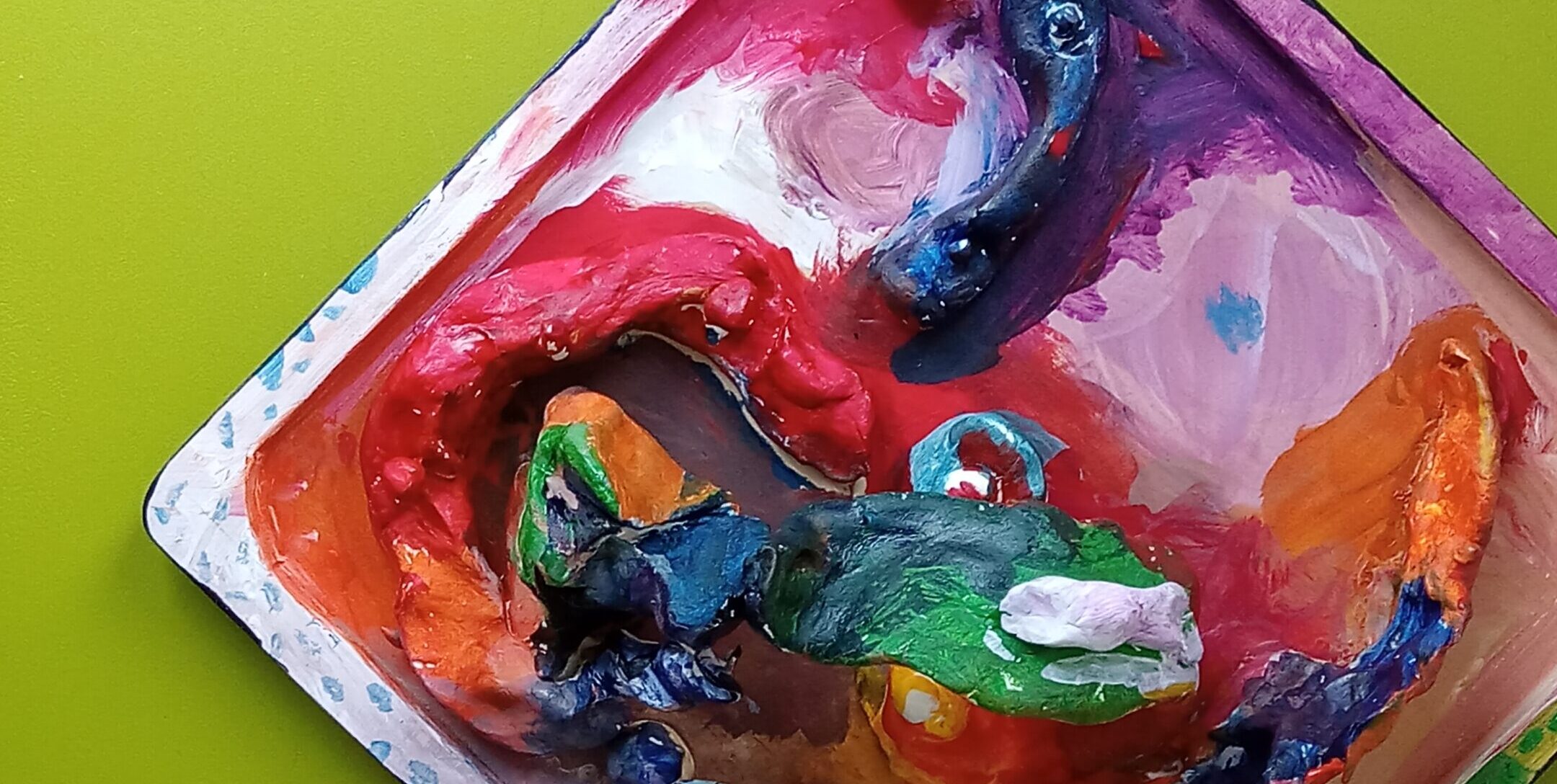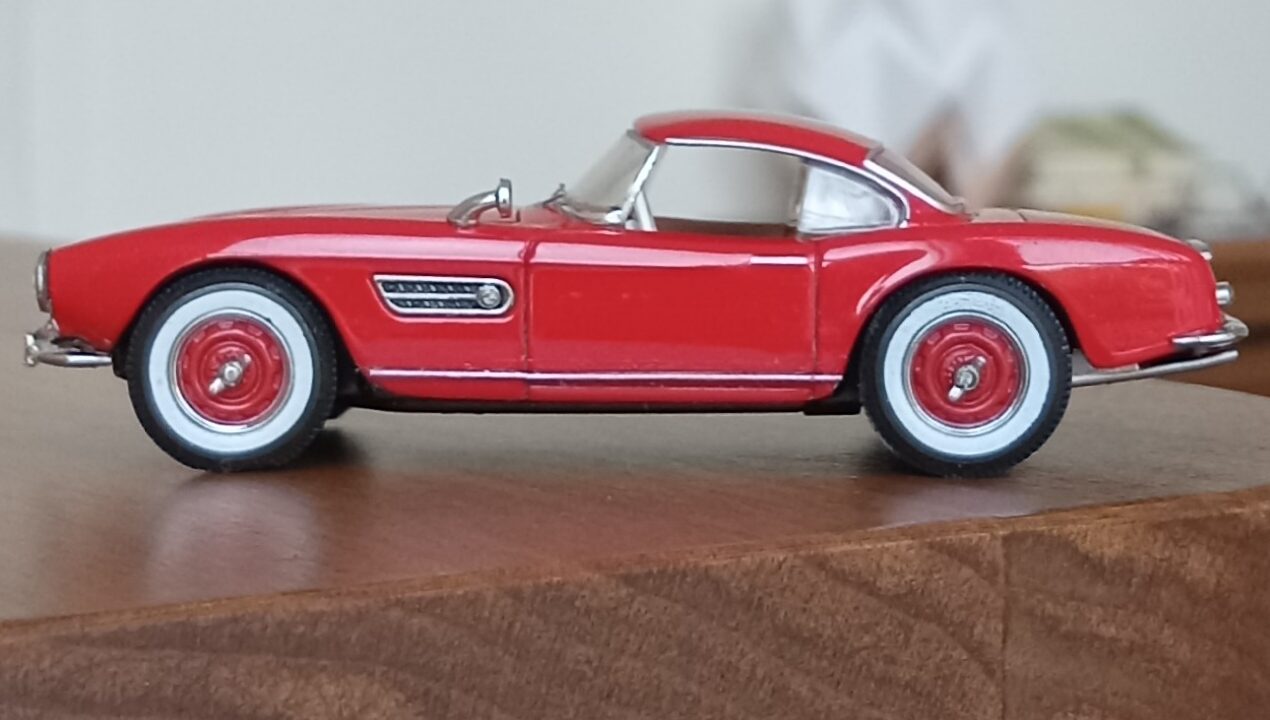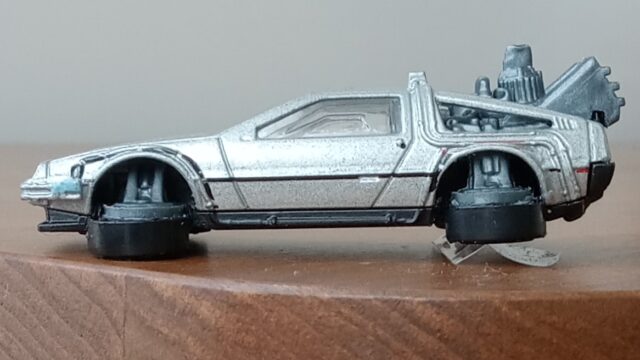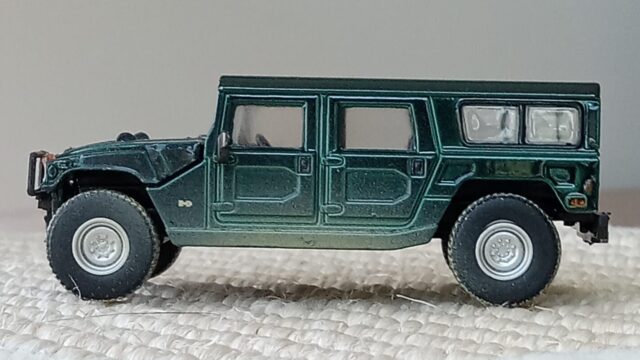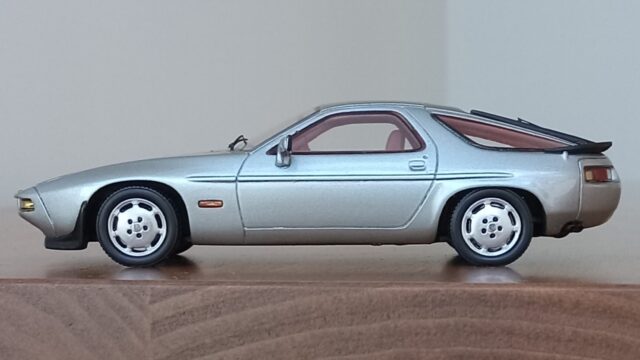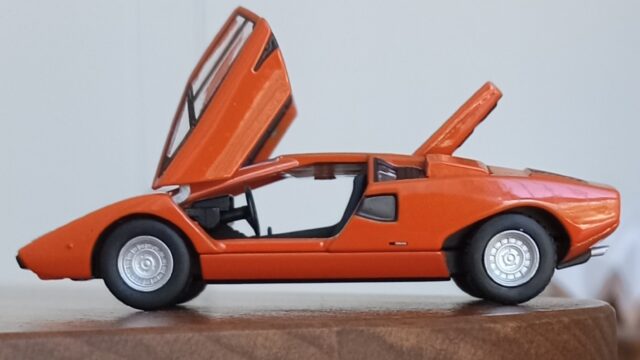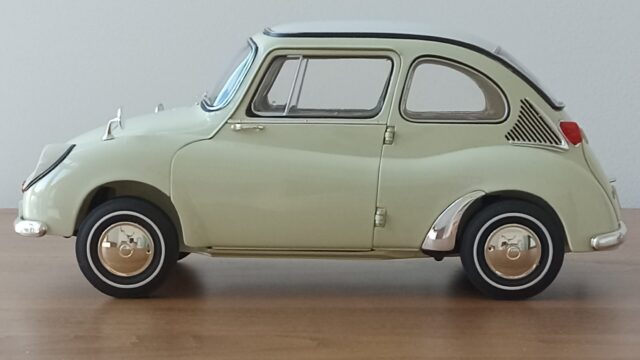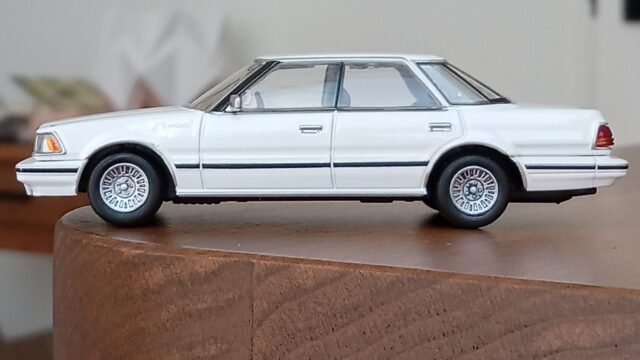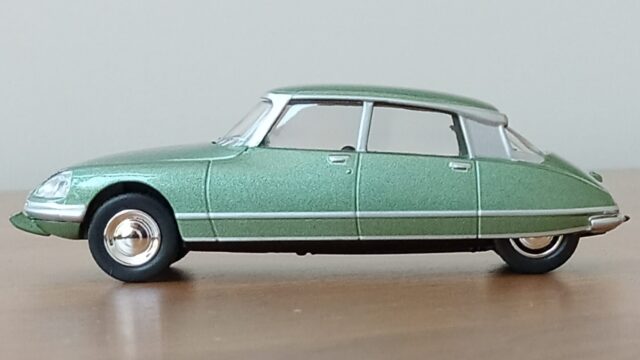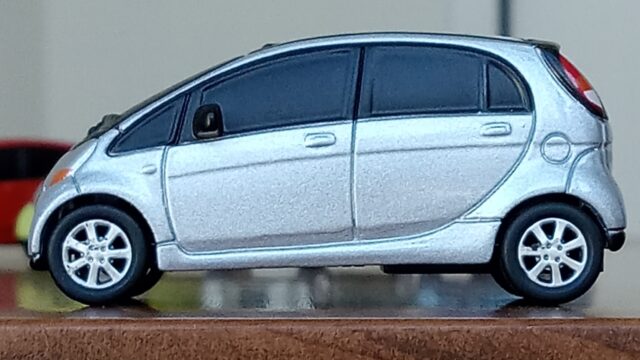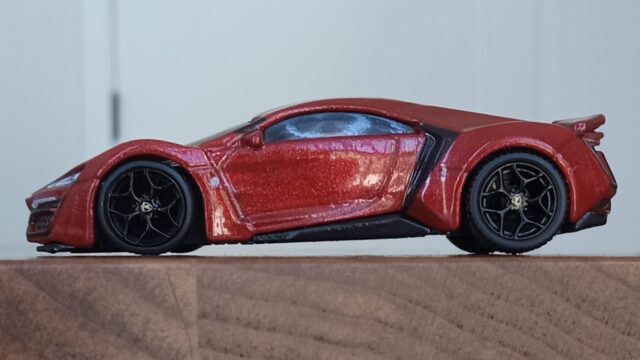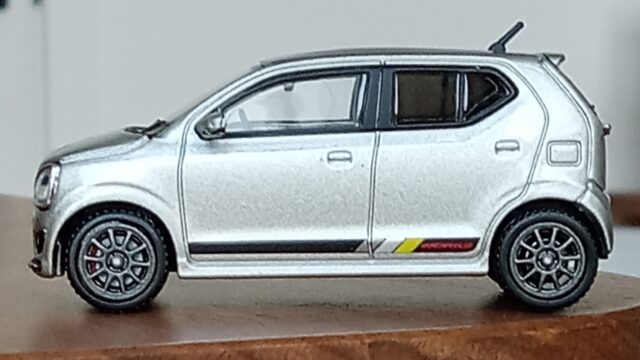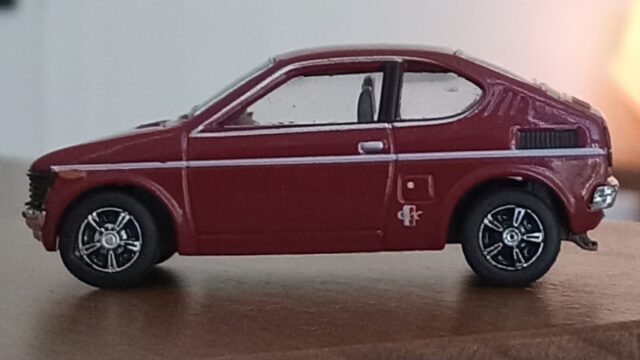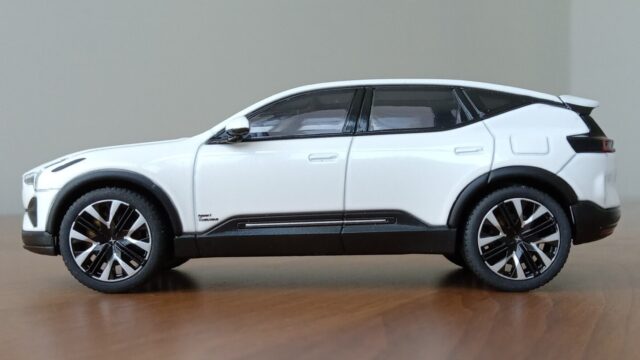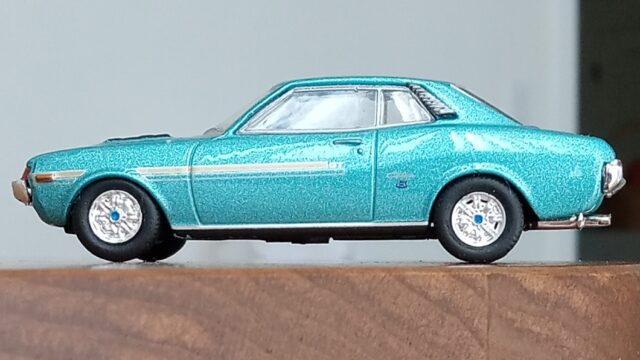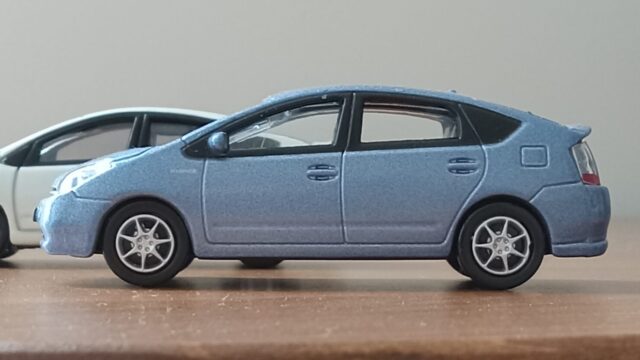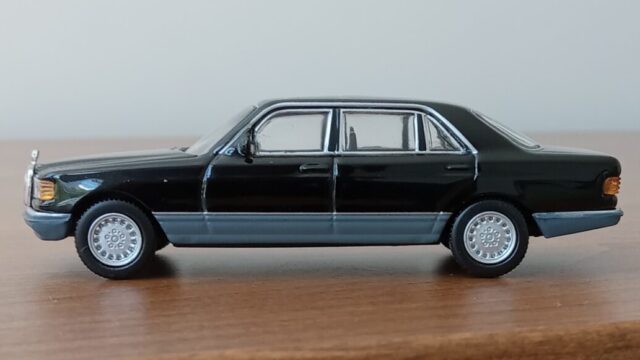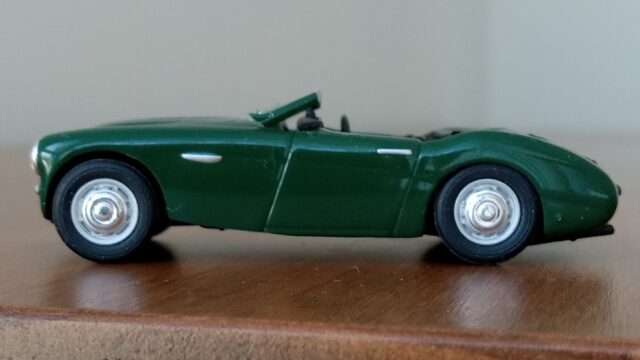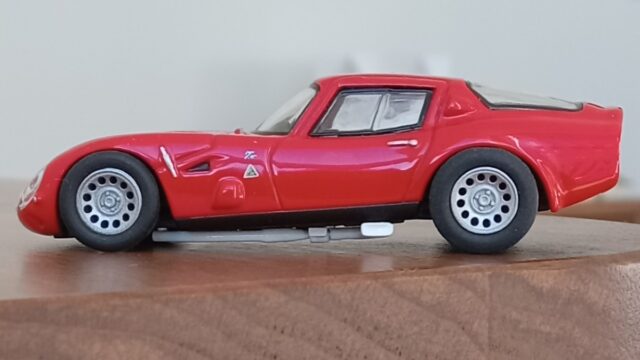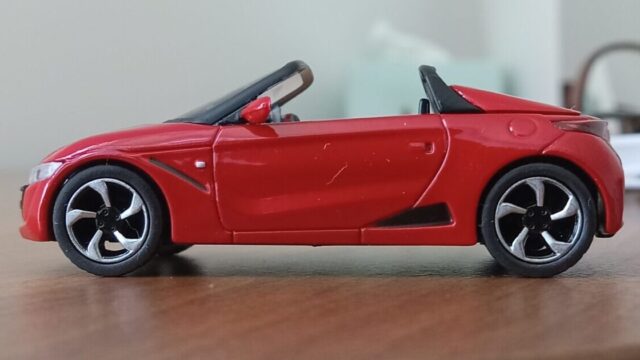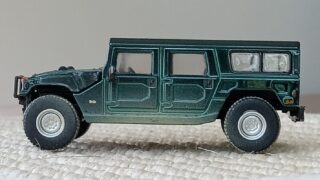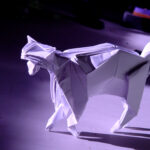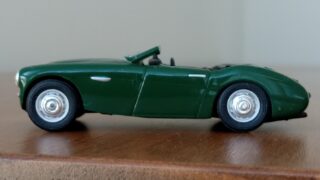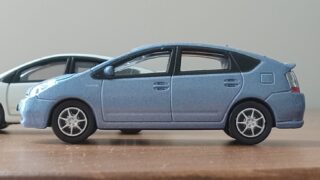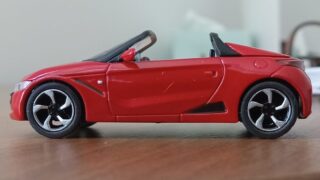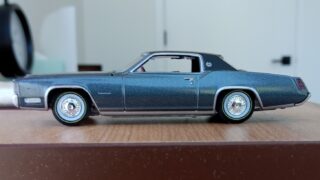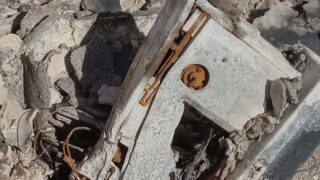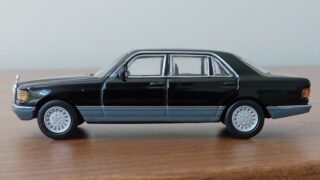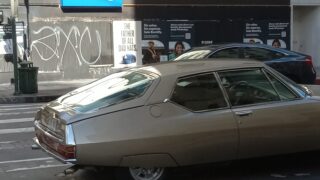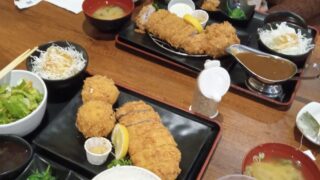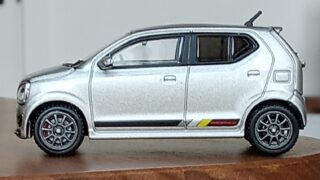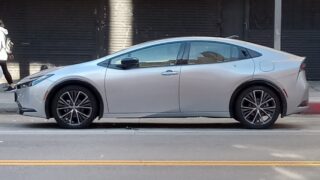自己紹介代わりの手のひら談義
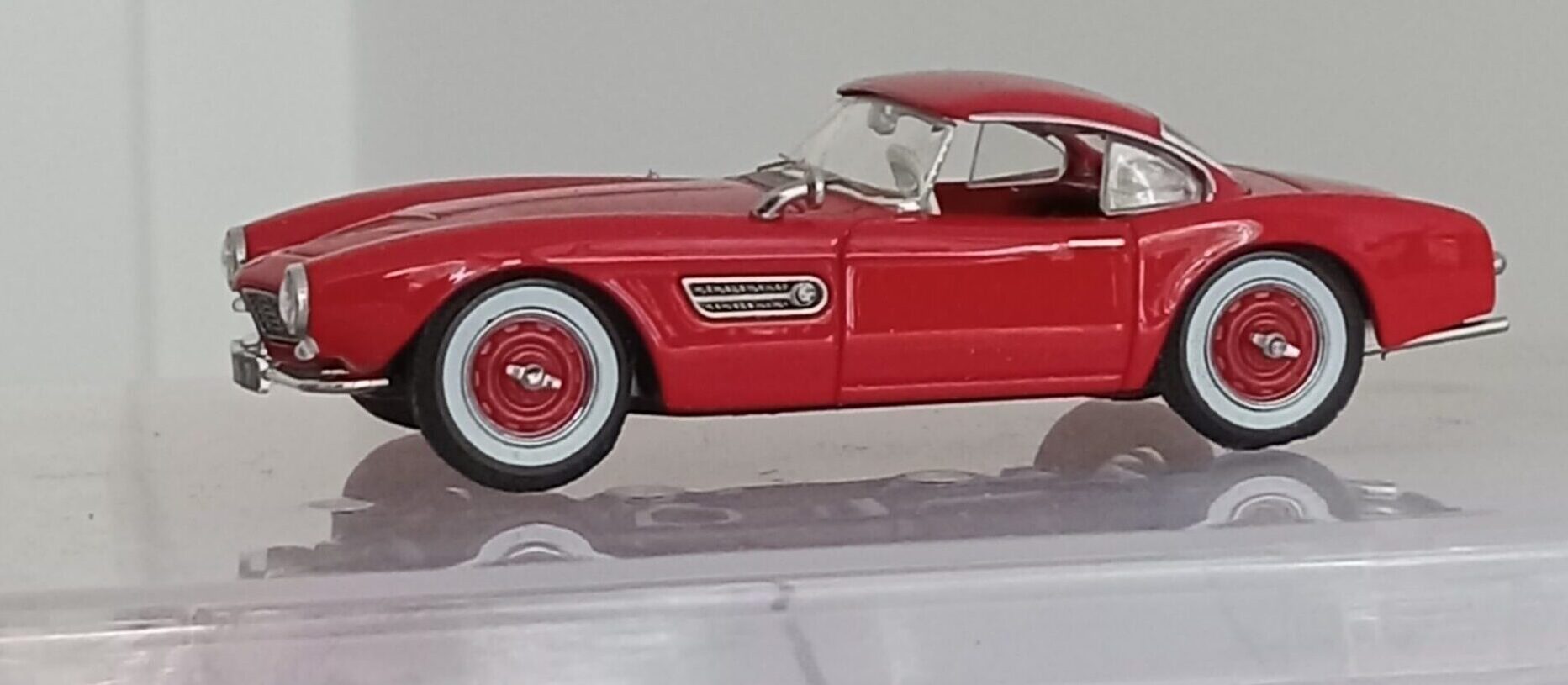
自己紹介代わりに、私の立体造形遍歴につきお話しさせていただきます。
思えば物心がついた時以来、
いつも私の手の中には何かの立体があったように思います。
(ちなみに、英語では私のように掌で感じることを、TACTILE SENSATION と言うそうです。また掌で感じるのが好きな人のことを、TACTILE PERSON と言ったりもします。)
あぶら粘土、ダイアブロック、泥団子、ヨーヨー、バッタやセミや昆虫、紙粘土、ミニカー、色鉛筆、(スパーカー)消しゴム、絵筆や書道の筆、そろばん、プラモデル、アクションフィギュア、工業用クレイ、雑誌や書籍、等々。
現在もこのリストは増え続けています。
この中でも特に粘土やプラモデルなど、自らの手で形をつくるのが特に好物です。
好みのタイプ:自動車デザイン・ベスト10
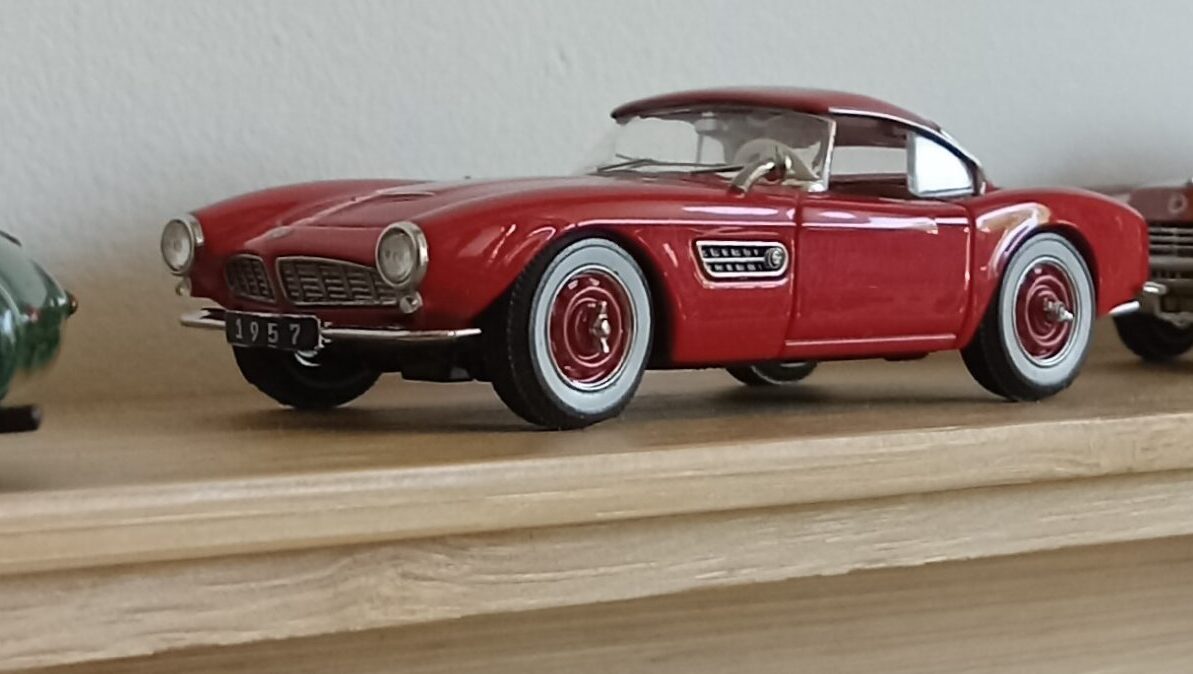
そんな中でも今回は、特に大好きな
自動車の外観デザインについての好み(曲がった嗜好)をお話しさせていただきます。
以下に好みの自動車デザインベスト10を上げることで、自分がどんな立体造形(形と色の組み合わせも含め)が好きなのかを検証していきたいです。(笑)
(初めて作るリストなのでワクワクしてます。)
第10位:BMW 507, 1956 ————————ーーー(シルバー+同色ハードトップ)
第9位:AMゼネラル ハマーH1, 1992 ——ー(軍用ウッドランド・カモフラージュ)
第8位:MB 560 SEL, W126型, 1979 ————ーー(黒とブルーグレーの2トーン)
第7位:キャデラック・エルドラド,1967 (メタリック・ブルーに黒のレザートップ)
第6位:トヨタ プリウス, 2003 (2代目)————————–(シーサイド・パール)
第5位:ホンダ S660, 2015 ————————————— (スター・ホワイトパール)
第4位:ポルシェ 928,1978 ————-(ライトブルー・メタに格子パターンの内装)
第3位:シトロエン DS23 Pallas, 1973 ————————(シャンペーン・ゴールド)
第2位:ランボルギーニ・カウンタック LP400, 1974 ——————ーー (オレンジ)
第1位:オースチン・ヒーレー 100/4 (BN/1), 1953 –(アイボリーと濃紺の2トン)
いろいろ入れ替え書き換えした挙句、以上の結果となりました。
ちなみに、生産国別では、
*ドイツ車:3台
*日本車:2台
*アメ車:2台
*英国車、フランス車、イタリア車 :各1台
といった結果になりました。
おっと、日本車も頑張ってますね!
続いて、車種別では、
*4ドア・セダン:3台
*GTツアラー:3台
*軽量スポーツカー:2台
*スーパーカー:1台
*軍用車両:1台
こんな感じで、かなりバラエティーに富んだ内容になりました。
4ドアセダン3台は意外でしたね。
それでは10位から順に解説していきたいと思いますが、その前に惜しくも10位に入賞できなかった残念賞または『これだけは言っておきたいで賞』(Honorable Mention)を上げておきます。
『これだけは言っておきたいで賞』
惜しくもベスト10入りを逃したものの、
どうしても言っておきたいで賞、に輝いたのは、
マツダ MX-5 ロードスター、1989 (シルバー)となります。
私は個人的に自動車の運転にあまり興味がない、
というよりむしろ嫌いなのですが、
(小さなスポーツカーの運転は比較的好みです。)
この、こだわりのマツダ車には、外観の滑らかな美しさ以上に、MGB, ロータスエラン、エリートなどから連綿と続いてきたブリティシュ・ライトウエイト・スポーツカーの歴史を日本車として見事に継承した、パッケージレイアウトの巧妙な美しさには目を見張るものがあります。
デザイン以上に自動車の動的レイアウトの理想を追求する職人的姿勢には、感動を覚えずにはいられません!
このカテゴリーでのその他の好みのデザインは、
*MGB (発表会でのアイスブルー)
*初代ロータス・エリート(濃紺メタとシルバーの2トン)
*初代ロータス・エラン(黄色に銀のバンパー)
*マツダ RX-7, 1991 (3代目)(シルバーに赤内装)
駆動方式は違いますが、ライトウエイト・スポーツくくりということで、、、、
*初代ロータス・エリーゼ, 1996 (ブリティシュ・レーシング・グリーン)
*オペル・スピードスターまたは VX220(黄色、銀)
*ホンダ CR-X, 初代マイナー後,無限仕様 (シルバー)
*ホンダビート、(黄色)
*ホンダ S600、(赤)
この辺りは、『理想的な重量配分を追求した小排気量のスポーツカー』のカテゴリーです。
もう一台ぜひ入れておきたいのが、
MB 500K スペシャル・ロードスター、1934(黒外装に真紅の内装)となります。
(リバティ―64社製、1/64、車高を低く改造済み)
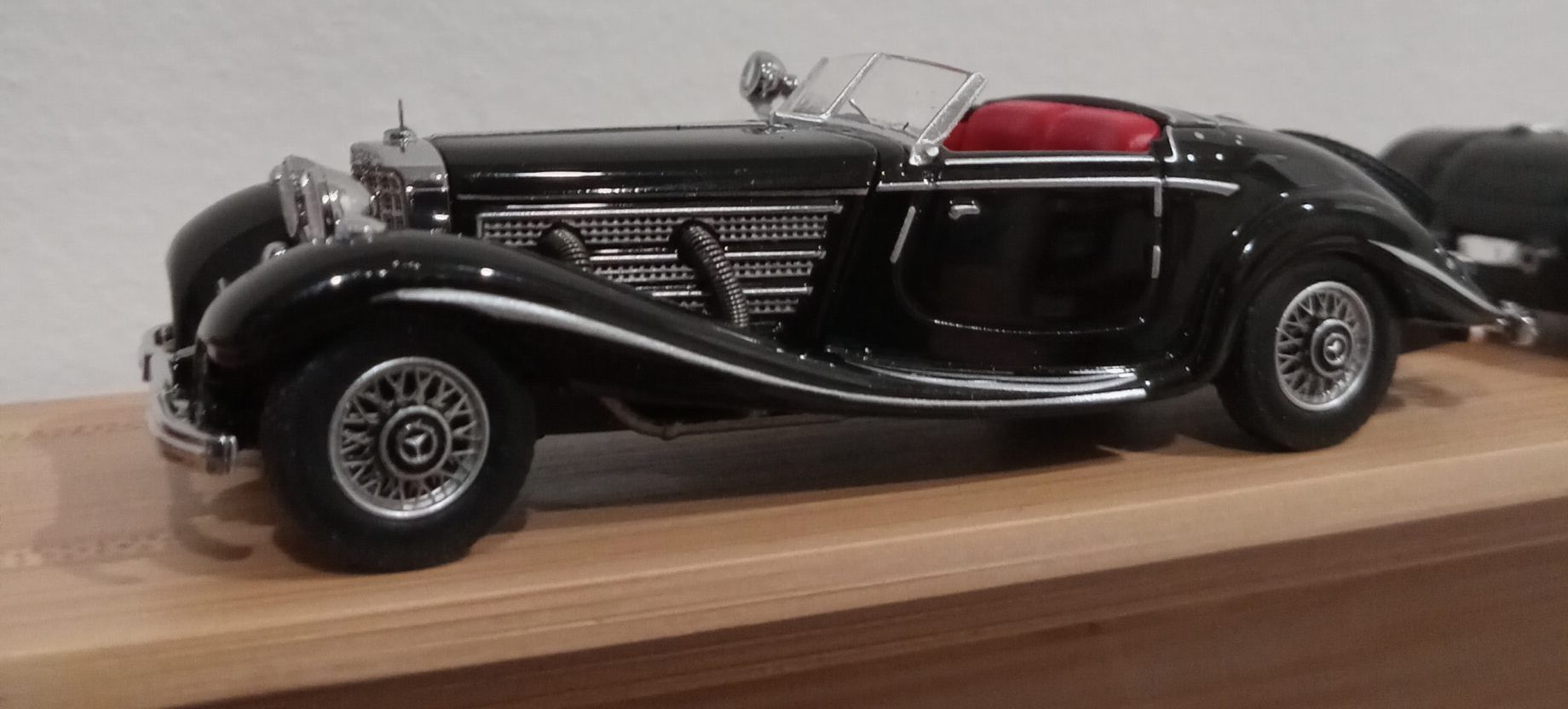
こちらは史上最も美しい自動車ベストテン特集で常に上位を占めてくる、映画で言えば「市民ケーン」や「2001年宇宙の旅」のような車です。(笑)
自動車コンクールなどで実車を数回目にする機会がありましたが、
そのたたずまいが放つオーラはやはり、すさまじいものがありました。
また当時のブガッティーやフランス、スペインの狂気じみた酔狂さとは無縁で、本寸法なバランス感あふれる伸びやかな美しさの追求に何とも言えないすがすがしさを感じます。
同じ様な「伸びやかな美しさを追求した本寸法デザイン」として、
同じくメルセデスの、
MB 300SL ガルウイングとハードトップの両バージョン(銀+バーガンディー内装)
も上げておきたいです。
ではいよいよ、ベスト10に入ったデザインの入賞理由と自分の中での立体造形としての位置付けを解説していきたいです。
第10位:BMW 507, 1956
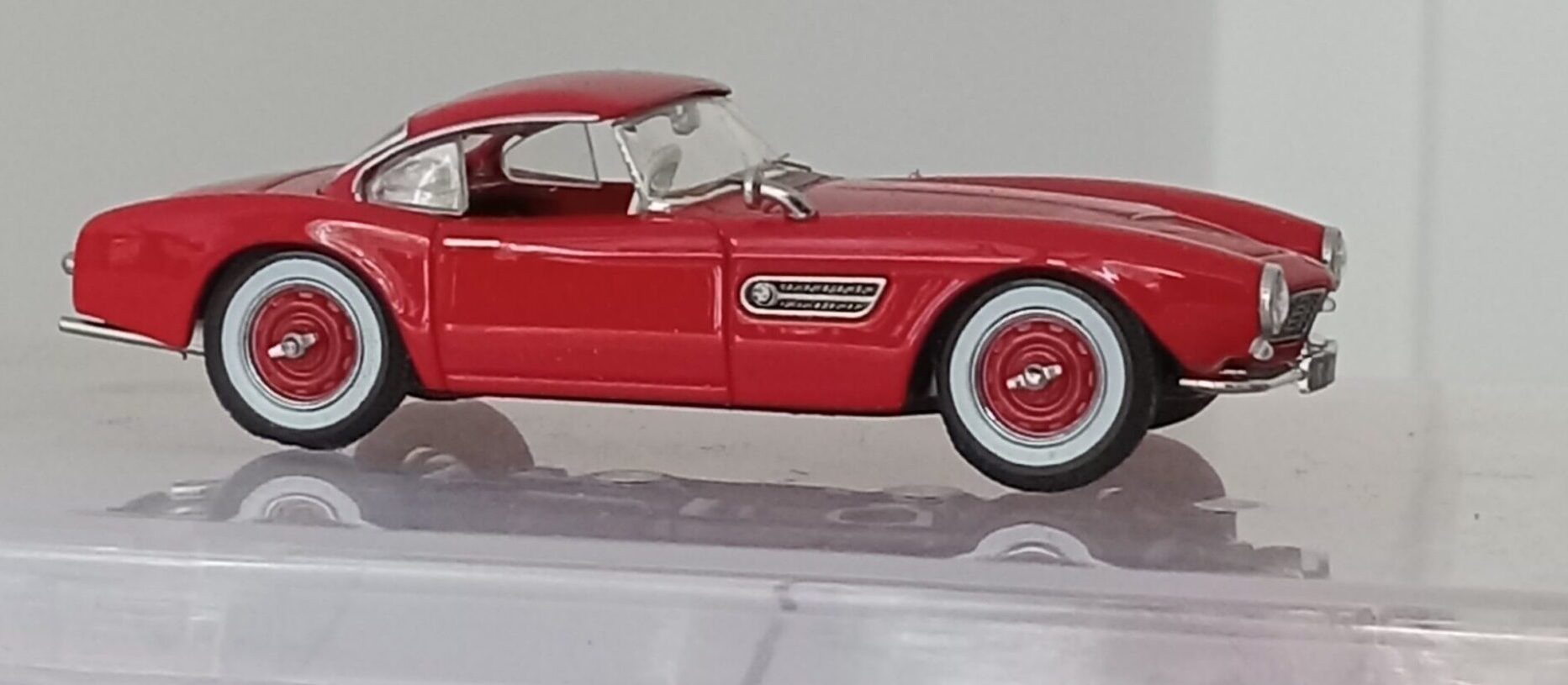
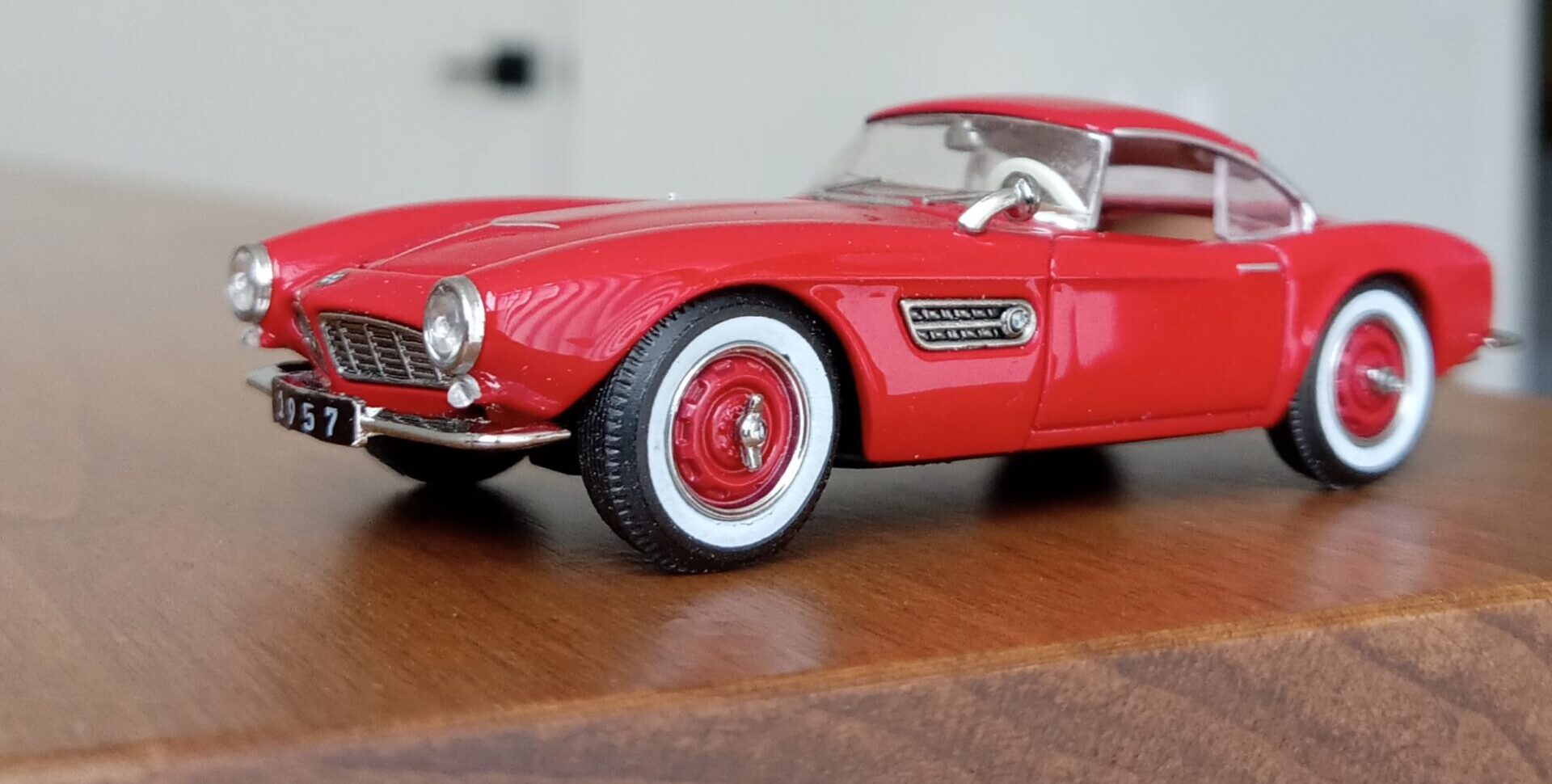
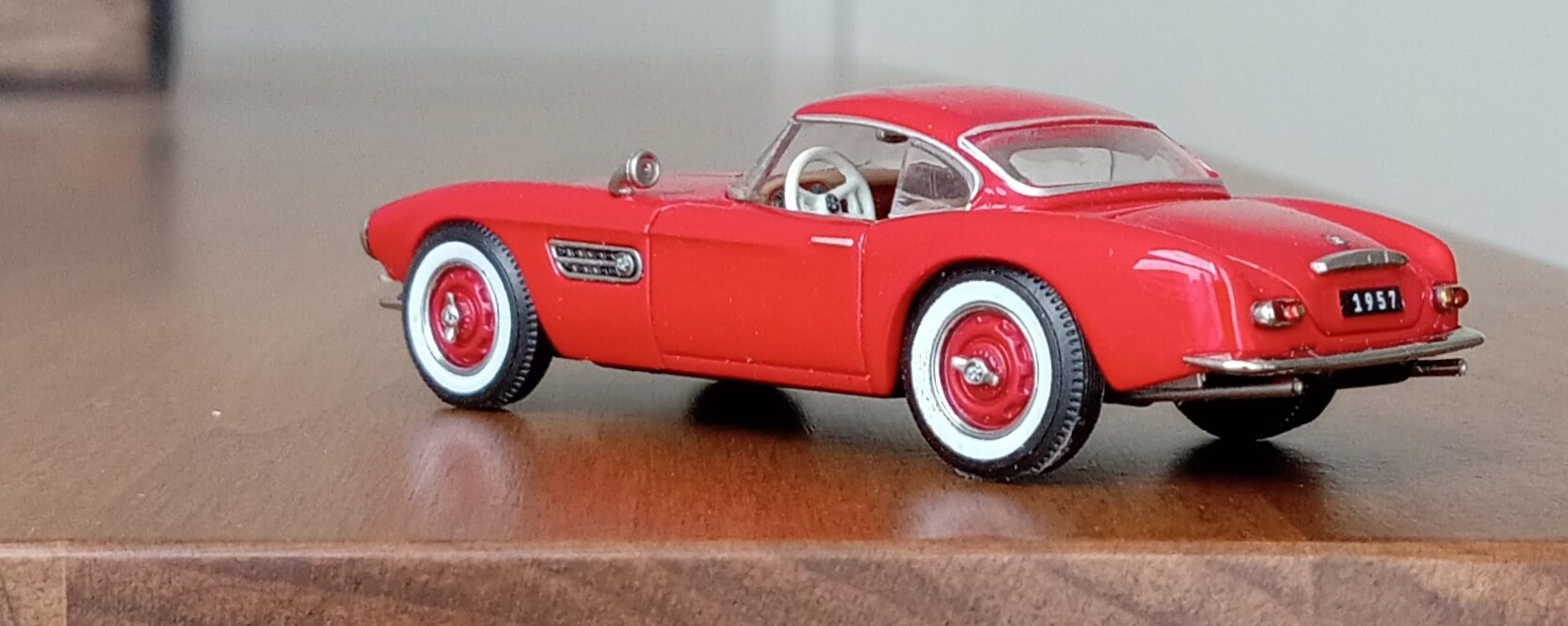
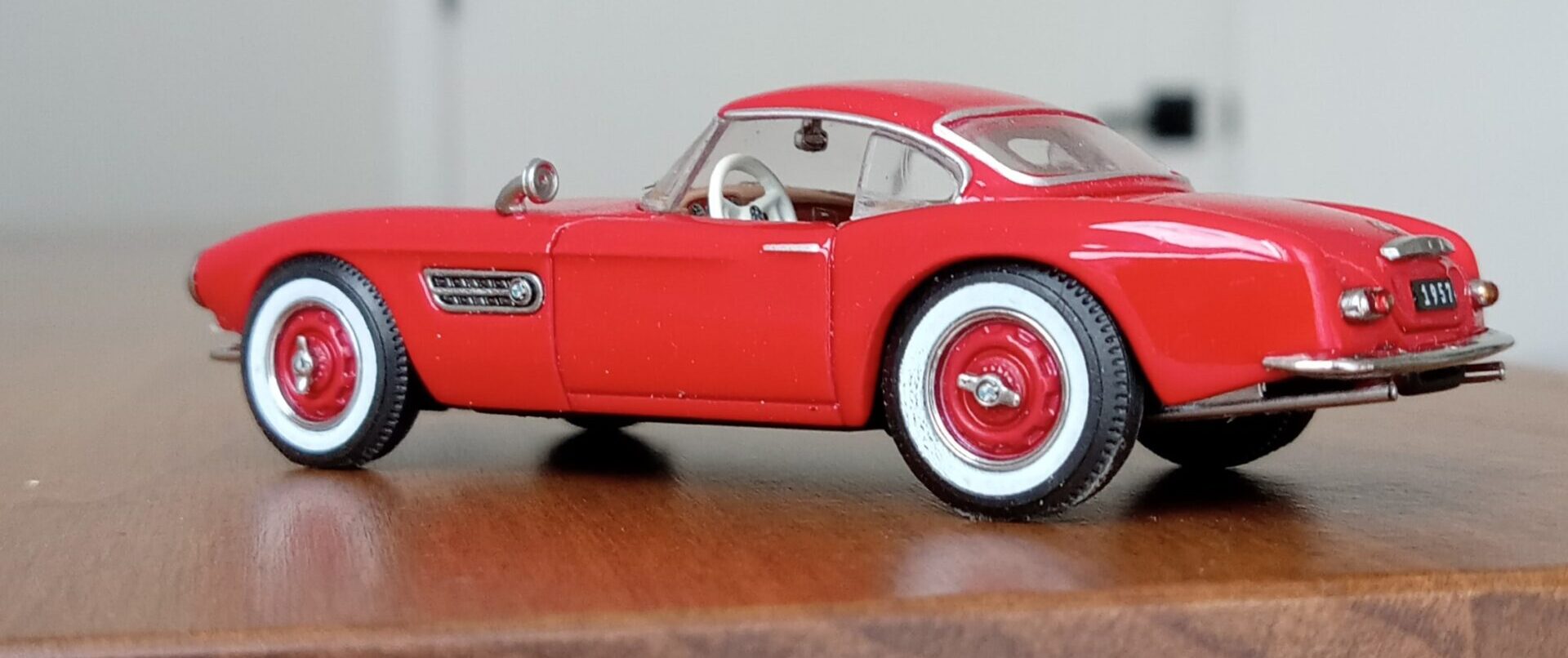
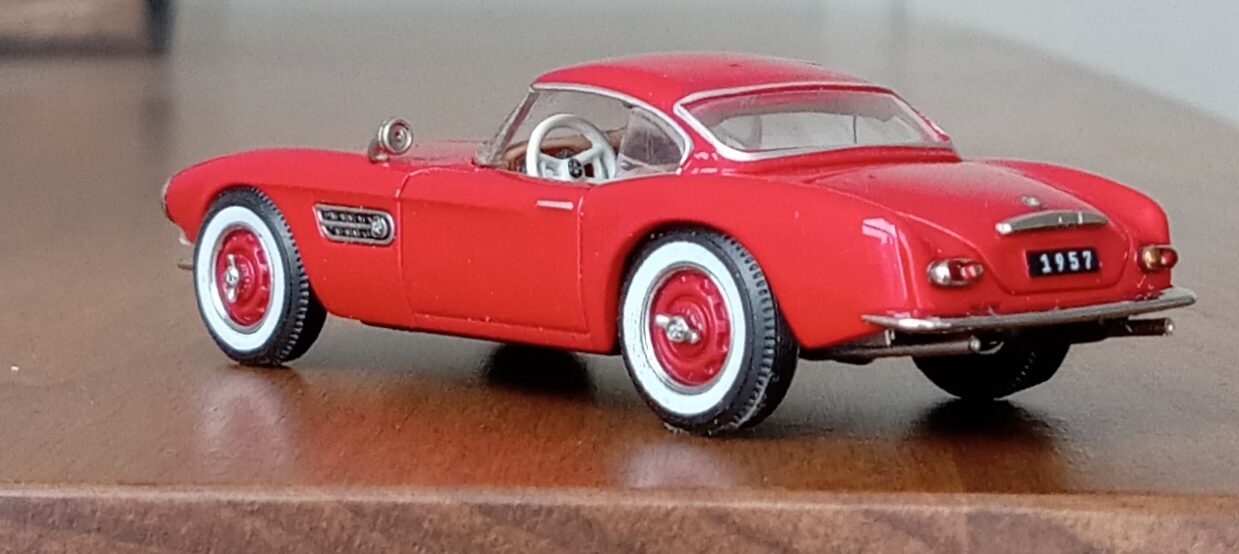

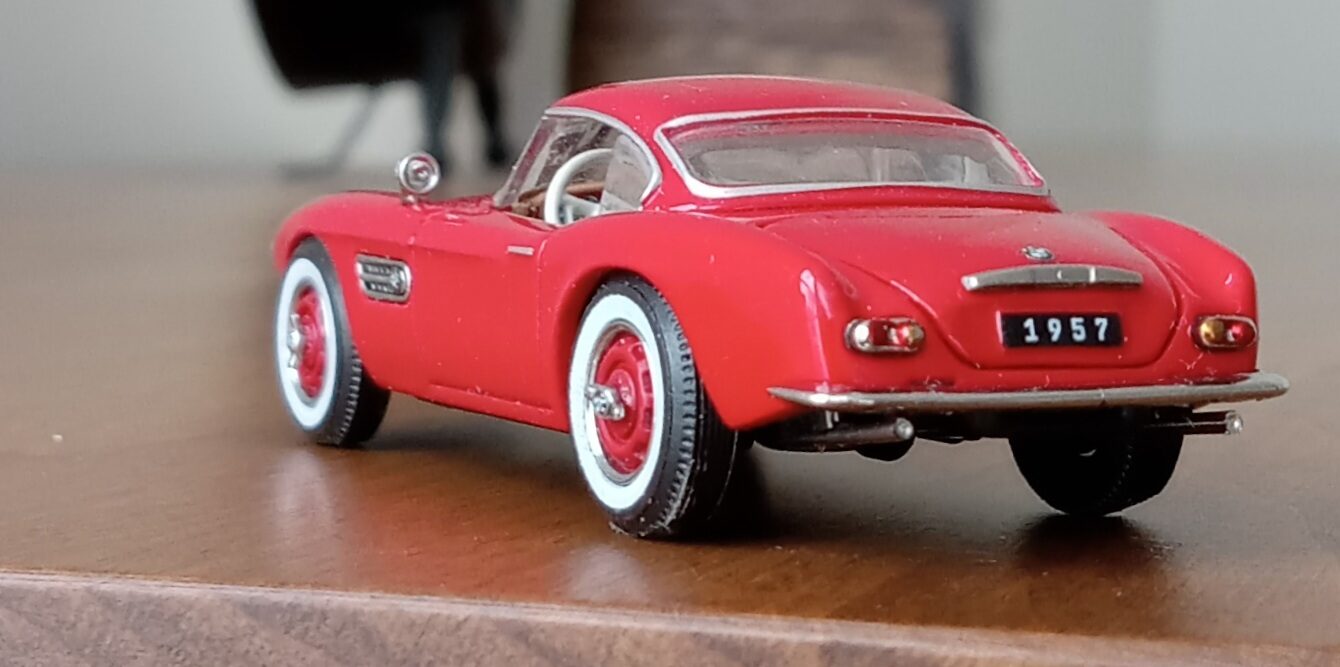
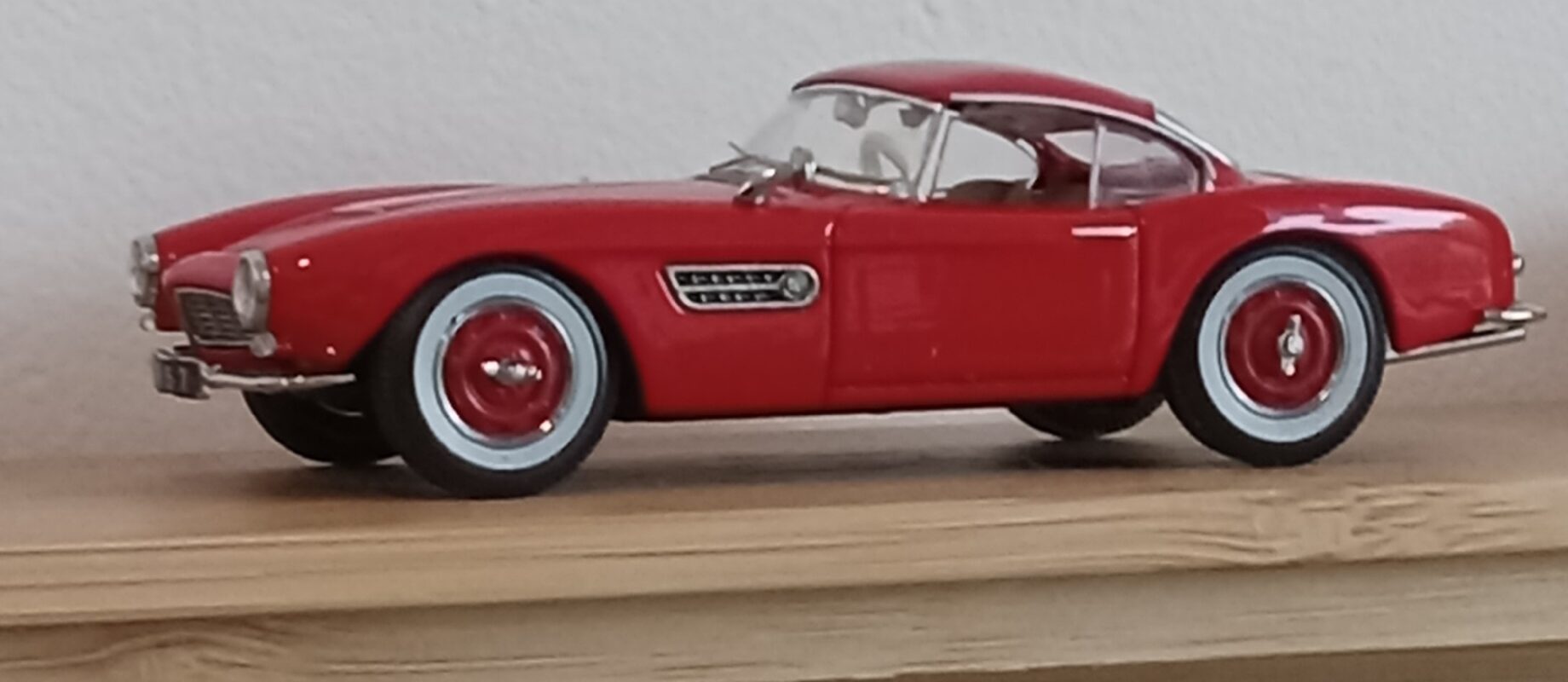
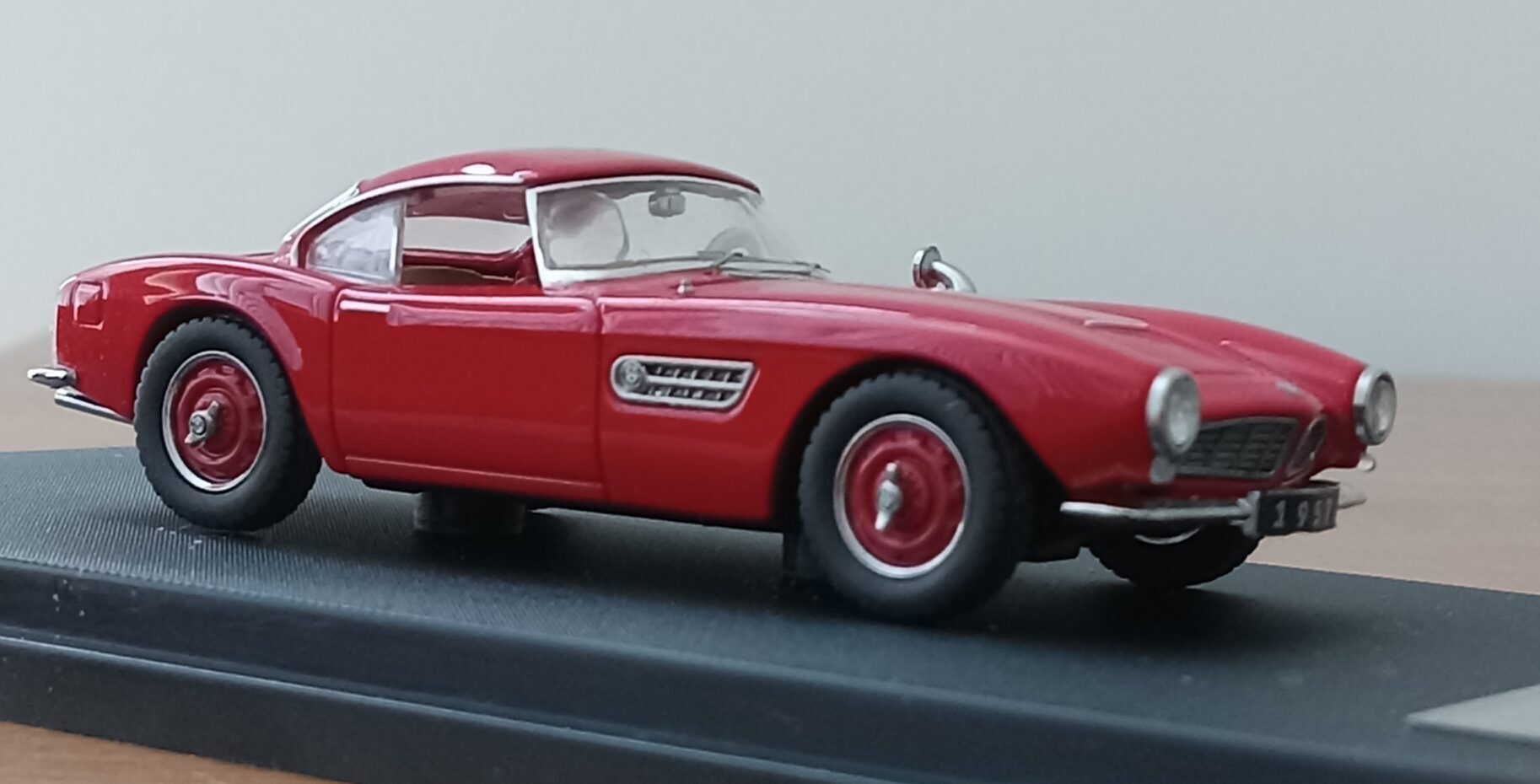 (GFCC製 BMW 507 (Deep Red)with Red Hardtop Version)
(GFCC製 BMW 507 (Deep Red)with Red Hardtop Version)
メルセデス・ベンツ300SLが(戦後の経済ブーム真っ盛りの)アメリカで大成功を収める中、BMWが高級セダンのシャーシを短縮することで作り上げたBMW507は、あいにく価格の高騰などの理由により3年間で252台を販売するにとどまりました。
しかしながら、その外観デザインの秀逸さに対する評価は年を追うごとにどんどん高まっております。
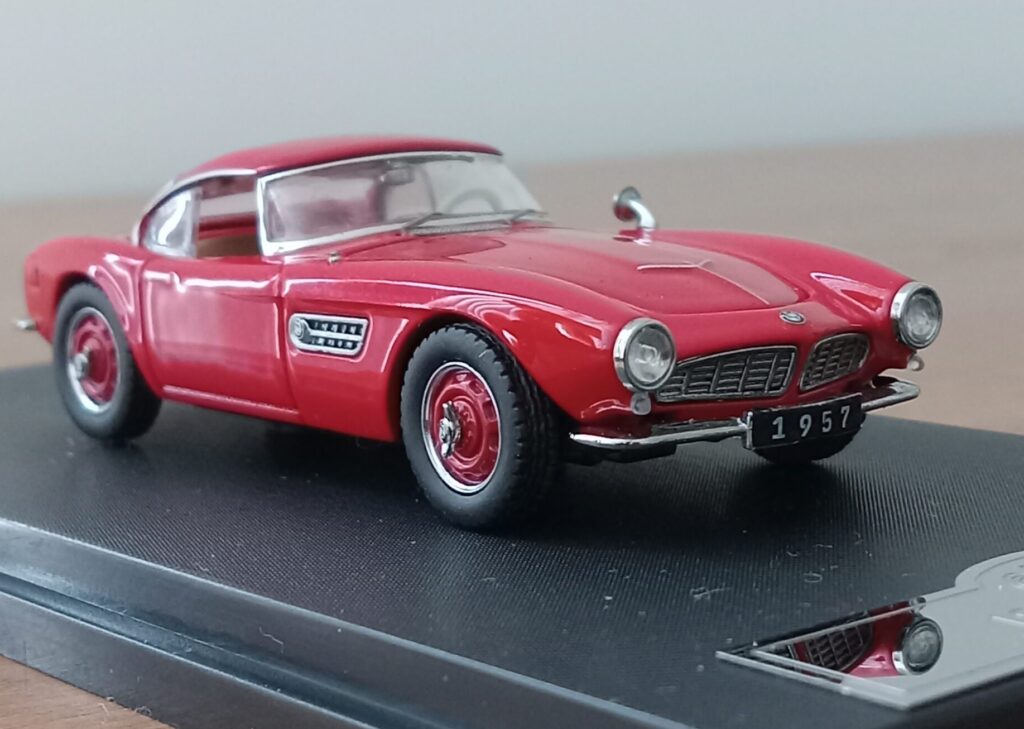
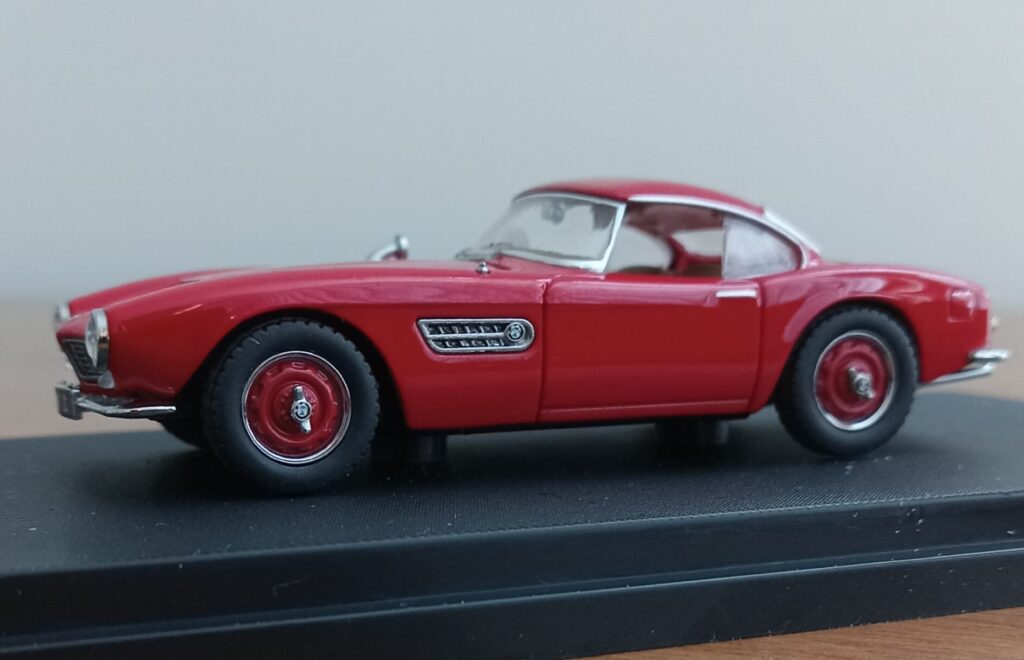
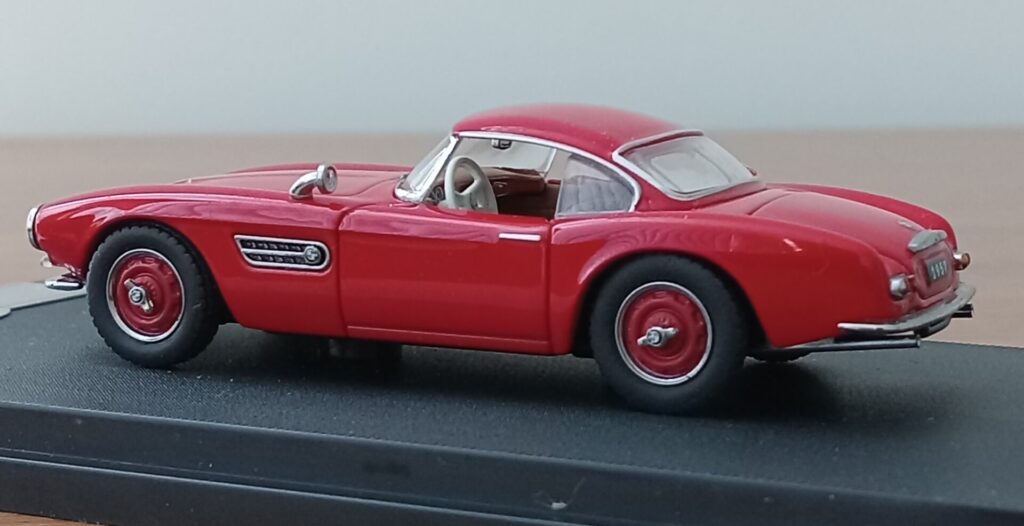
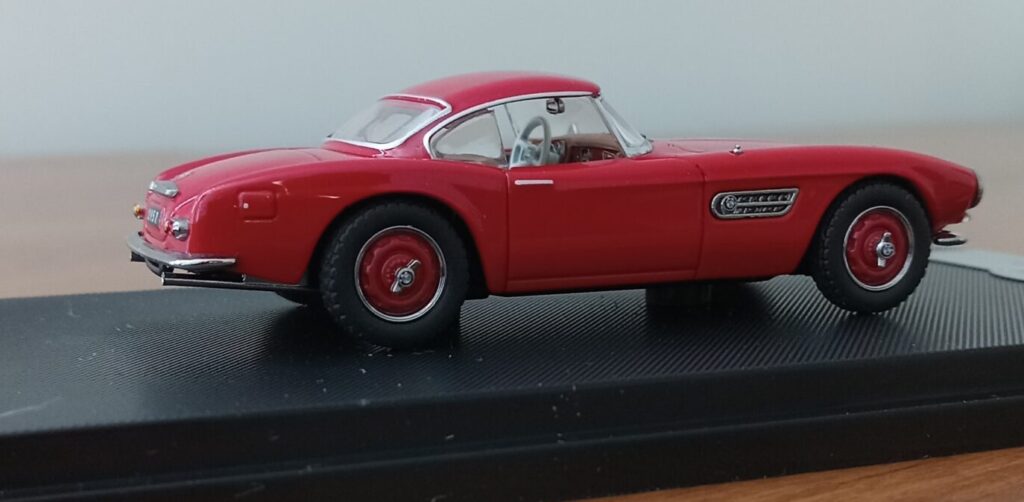
私と、BMW 507との歴史はすでに30年以上に及びます。
思えば1993年ごろ、パサデナのミニカー・ショーの会場で発売前のミニチャンプス社製の1/43の真っ赤な507を手に入れたのがきっかけで、その後何10社というブランドから出ているすべてのスケール(1/18,1/24,1/36,1/43,1/64,1/87,ETC.) のBMW507のミニカーを集めるに至りました。
とにかく初めてその真っ赤なミニカーを見た時の感想は、
『こんなに完ぺきなデザインが存在したんだ!』
といったもので、
それ以降はほぼ一択で、このデザインに対する敬愛と複雑な思いを模型、ミニカー、雑誌、書籍、動画、ネット記事、実物鑑賞などで積み上げてきました。(この辺りは後程別の記事として、詳しく語りたいです。)
もちろん当時、今回のようなベスト10を行えば、BMW507が第1位でした。
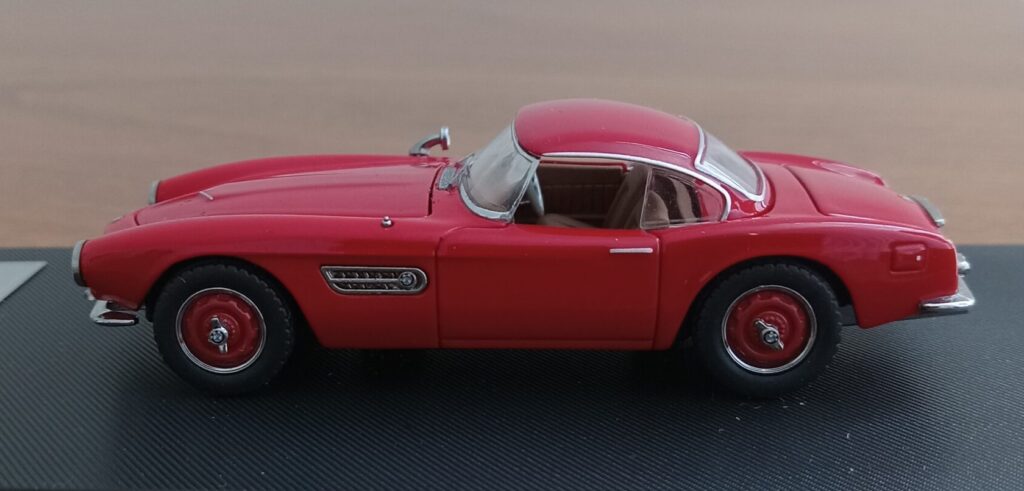
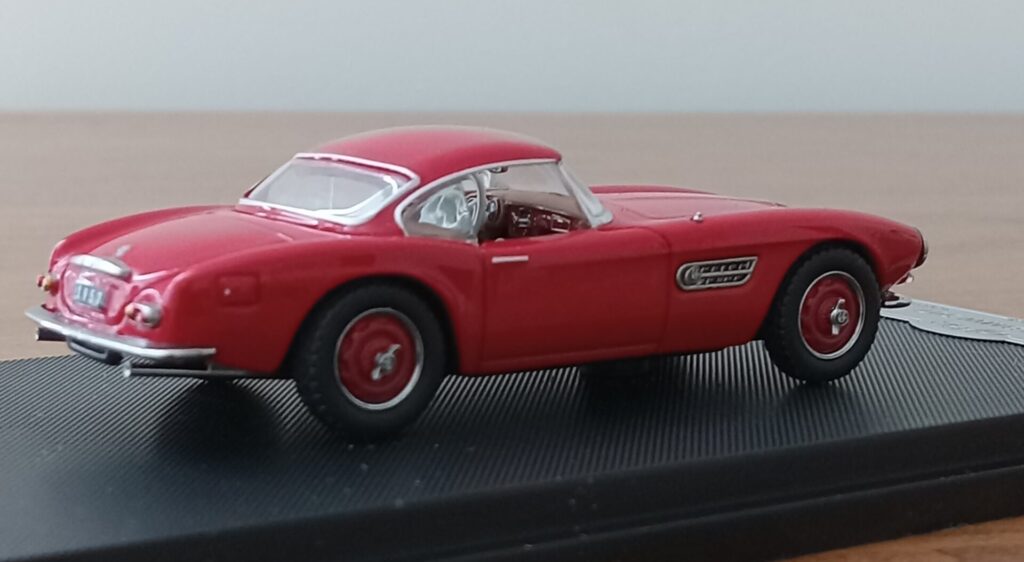
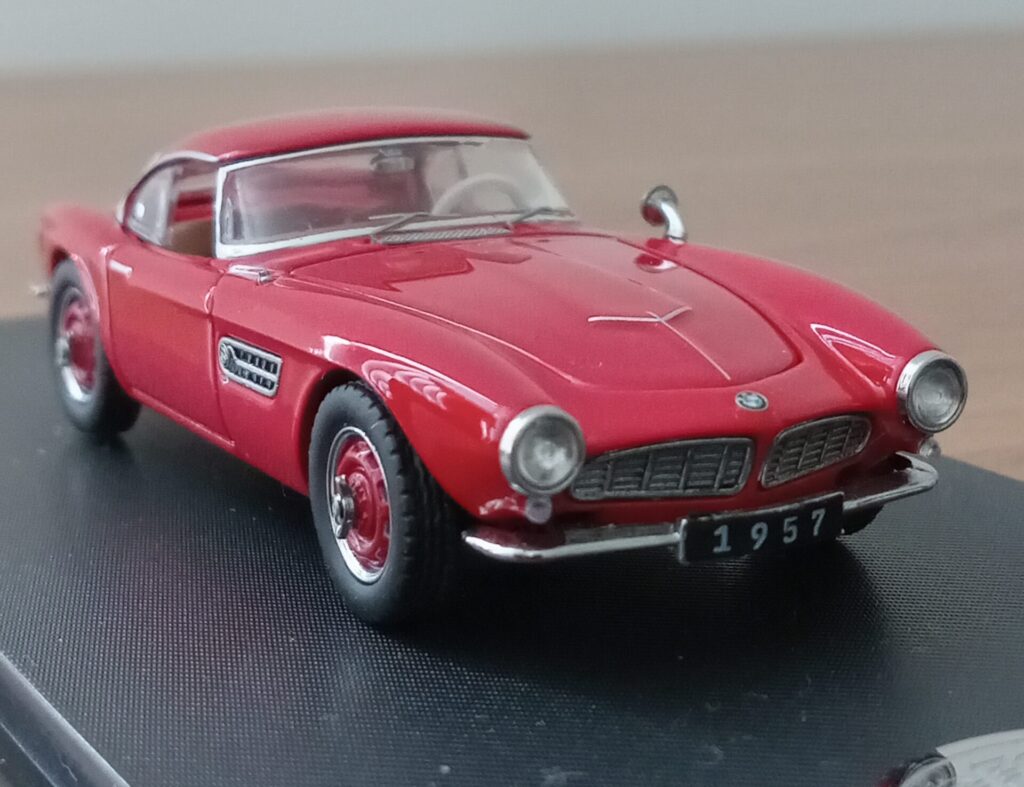
私的には以下のような点が魅力です。
*当時はやり始めていたコークボトル・シェイプと前後のフェンダーの女性的なカーブを劇的に融合。=伸びやかさと優美さの融合。(流線形的な完成解=MB300SLに対する挑戦状的な、、、)
*ボディー中心線の前方、ボンネットの先端、をかなり低い位置まで落としていた、それまでのこの種のスポーツカーのフロントノーズ・デザイン(フェラーリ250TR、オースチン・ヒーレー等)に対して、高い位置で前方に鋭く突き出し、かつ(サイドビューで)逆スラント化させることで、フロントビューの獰猛かつ気品あふれる顔つきを演出しています。(この辺りはのちのBMWの代名詞:逆スラントノーズの先駆け、と見ることも出来る見逃せないポイントです。後のランボルギーニ・ミウラ、ジャガーXJ-Sなんかにも顕著です。)
*FR車であることを最大限に生かして、先例がないほどに、美しいサイドビューを実現した、たぐいまれな前後の車軸とその位置関係、タイヤサイズ・扁平率の選択の妙。
*オープンカーではありますが、ソフト・トップ、更には、ハードトップ装着時の美しさも特筆ものです。(この辺りは、最近の95パーセンタイルのパーッケージマネキン規格のドイツ製オープンカーには望めないところです。トップ・アップ時=頭でっかち)
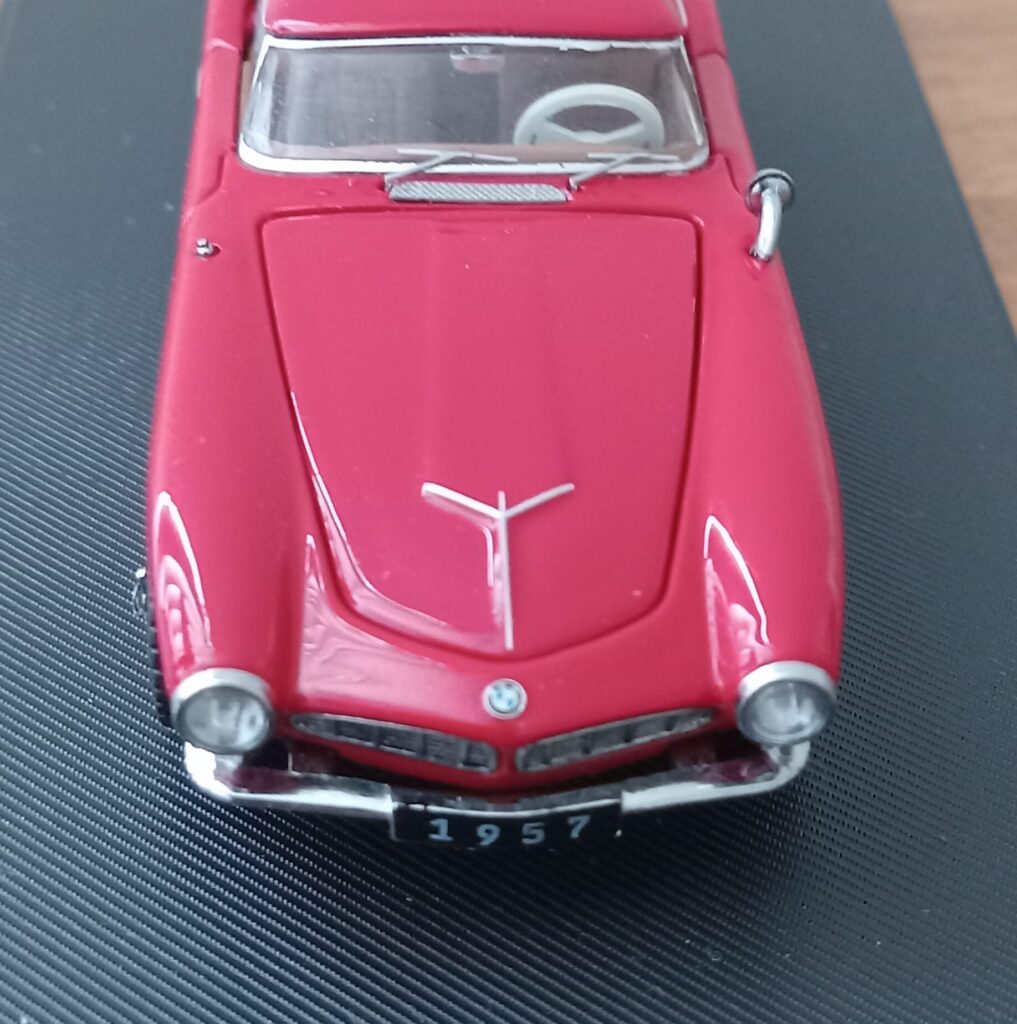
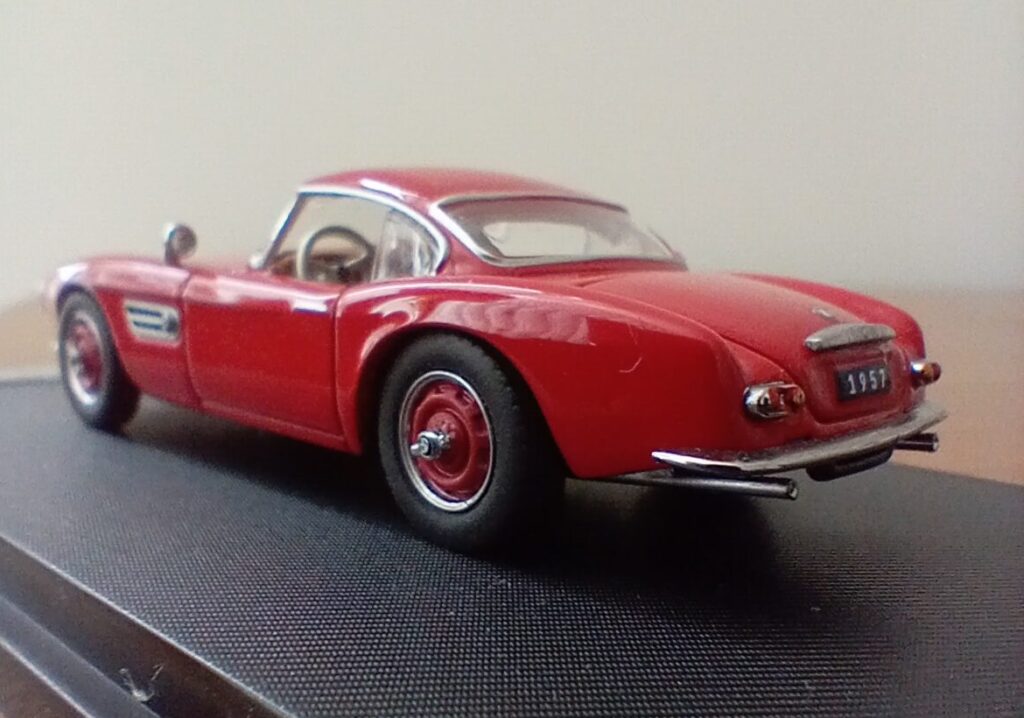
私の中で507に対しての敬愛の情が少し揺らいだのは、皮肉なことに、実車をまじかに見た時のことでした。15年ほど前のLAオートショーでのこと、新車展示の傍らクラシックカーの展示もあり、その中に我らがBMW507 (真っ黒で内装はタン)のお姿もあったのです。
『これが、あの507? こんなに小さかったか?』
外装が収縮色の『黒』だったこともあって、それまで数々のミニカーや模型を見回して自分の中で膨張していた伸びやかで華麗なイメージとは裏腹に、そこにはチンまりとした痩せこけた子猫ような物体が丸まって、ニヤニヤ少しすまなさそうに香箱座りをしてました。泣
さらに不運だったのは、にわかに張り替えたらしいオレンジ寄りのタンの内装と黒のコントラストが強すぎて非常に下品だったうえ、ダメダメな黒の外装に反映するホール内の無数の照明がごてごてとして『ちっさいからだに装飾過剰気味なダンサー』を連想させ、最悪の初対面となりました。(抑揚の強い外観にはシルバーや白のような薄い外装色のほうが似合うと思います。)
そんなトラウマ経験も、
その後, 程度の良い実物の507をコンクールや、博物館で見学したり、良質のカタログ写真などをネットで拝見したりするにつれ、やはり『良いものは良い』と思えるようにまでなり、さらに昨年末(2024)、 中国のGFCC社製の1/64のミニカーを発見するに至り, 507に対する敬愛は完全に復活するに至りました。

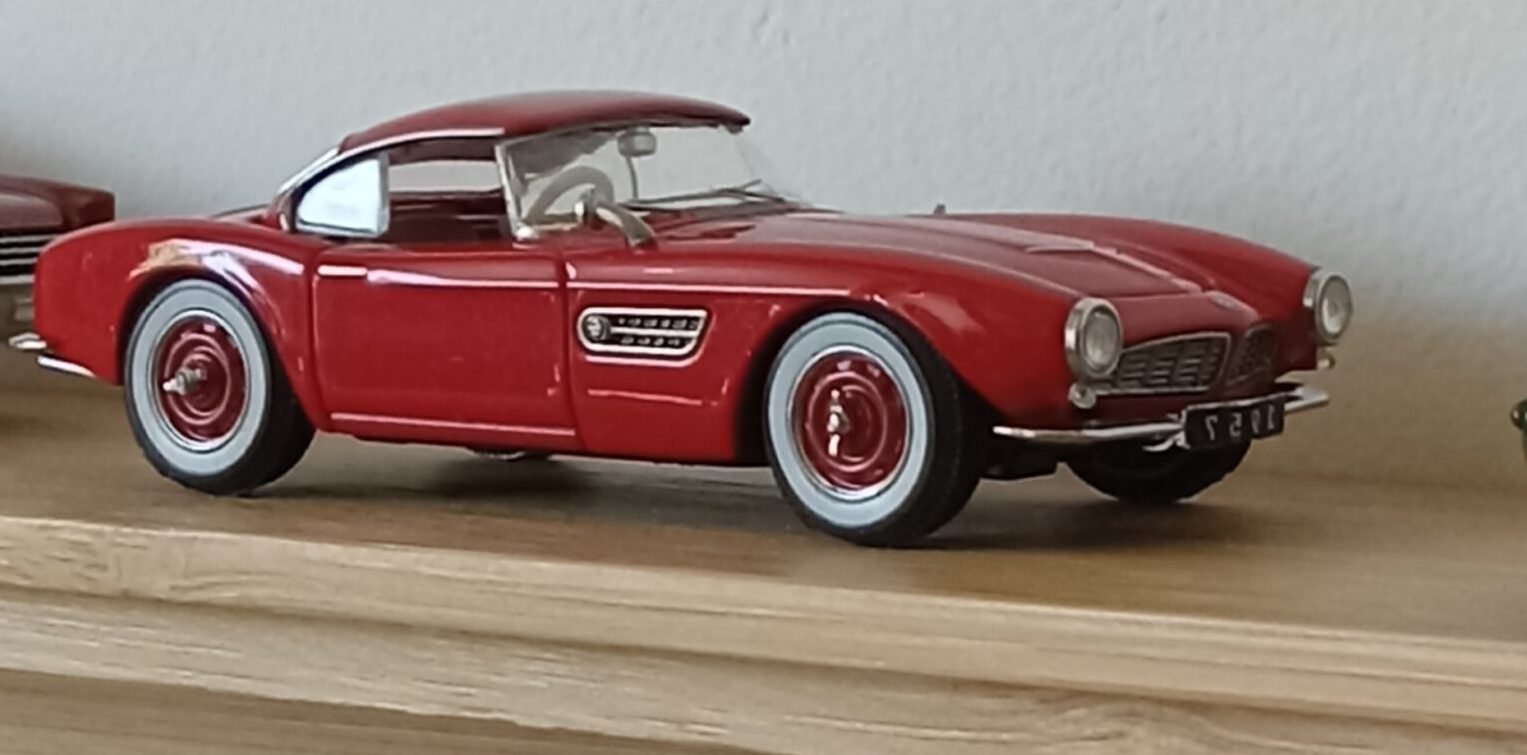
以上が、わたしのBMW507に対する偏愛の一部(デザイン編)です。
さらにBMW507に関しては今後、別の特集記事として資料編、ミニカー編などもお届けできればうれしいです。
このカテゴリー:前後のフェンダーが強調されたコークボトル・スタイル、でのその他の好みのデザインは、
*トヨタ2000GT (アイボリーホワイト)
*ランボルギーニ・ミウラ (黄色)
*フェラーリ 250TR/テスタロッサ・ポンツーンフェンダー(フェラーリ・レッド)
*フェラーリ 250GTO, 1964 (メタリック・ネイビー)
*アルファ・ロメオ TZ2,(アルファ・レッド、暗い赤)
*コルベット・スティングレー/ コンバーチブル、1964 (タキシード・ブラック)
復古調デザインの例としては、
*3代目 RX-7 (シルバーで真っ赤な内装)
*4代目 スープラ (赤ボディーに艶なし黒ホイール)
こうして並べてみますと、
このカテゴリーのデザインは、
時代の最先端のレースカーがFRからミッドシップに変化する中、戦前から続いていた『フェンダーとは野蛮なタイヤを形よく覆い隠すもの』という概念を強調することで、その後に一世を風靡する『直線基調のウエッジシェープの時代へ』の過渡期的役割を担った感じですね。
『野生動物(FR)から都会の剥製(RR)へ、その変化の中で一時咲いた時代のあだ花』
といったところでしょうか。(嬉)
この時期は、
『ひらひらと揺蕩う姿が、
はかなくも、またとなく尊い』
自動車史の至宝が生まれた時期ですね。
追記:書き出す前は今回一回で、ベスト10を発表させて頂く予定でしたが、あまり長くなるのもいけないので、ベスト9以降は小分けして、分載させていただきます。
次回は『AMゼネラル、ハマーH1と私』と題して私のハマー・デザイン偏愛記をお届けいたします。
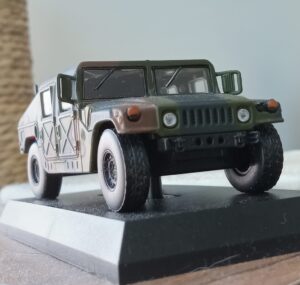
ーお楽しみにー
本ブログと記事内容につきまして:
ブログ記事を書くにあたり私の目標は、立体造形(料理も含めて)とのかかわりを通じて、私個人の特徴的(ネジ曲がり方も含めて)な評価軸を解明することで、「美しさ・美味しさ」に対する好奇心や、探求心を、どのように満足・充足させてきたのかを明記しておくことです。
従いまして、記事の中に出てくる、数字や年号、微細なデータなどには細心の注意を払っておりますが、時に大きな間違いや勘違いを犯していることも考えられます。特に自動車記事における主要諸元や、年号などには紛らわしいものも多く、あくまで参考程度に考えていただければ幸いです。
私としては、記事の中で個人的な外観デザインや味覚の評価、そこから広がる後半部分につなげるための、『流れ』を作るための客観的材料として年号やデータを挿入している感じです。あくまで重視したいのは、私個人の頭の中で起こる、記憶の錯そう的混沌から生まれる新たな『見方』や『情報の予想外のつながり』です。その勢いを作り出す、『流れ』の一環として、諸データが副次的に必要となるわけです。
話がそれますが、大好きな落語の世界に「三題噺」という、その場て会場から募った3つのお題を使って1つのお話に仕立てるといったお遊びがございますが、私はそれに近いことを立体造形の特徴や(料理のお味)をお題にして行っている感じがします。その中で頭の中に去来する数々の着想が、全く予想外で楽しく、次回からの記事内容を大幅に変えたり、新展開につながっています。
当ブロブの仕組み:
『好奇心の点と線 x 気まぐれ脳内回路=予想外の新展開』
こんな自分勝手なブログですが、今後ともよろしくお願いいたします。
追記:上記の『流れ』を作る為に必要な写真はできる限り、個人所有のミニカー・自前の料理などを使い撮影しておりますが、その他の必要最小限の図版や写真を他のブログ主様の記事や諸会社ホームページなどからお借りしております。(記事内容に合うよう加工させていただき、使用時は最小の解像度で載せております。)問題がある場合、ご連絡いただければ直ちに降ろさせていただきます。
追記2:当ブログ記事に掲載のミニカー写真等(個人撮影)は許可なしで、どのようにお使いいただいても結構です。私個人の創造性はこの世のもの、と言う認識の上で記事を製作しています。
!!!!!!!!!!!!!! English Translation !!!!!!!!!!!!!!!!!!!!!!!!!!!!!!!!!!!!!!!!!!!!!!!
Always sculpting in the palm of my hand: Top 10 Car Designs, etc.
June 9, 2025 / June 16, 2025
A conversation about my palms instead of a self-introduction
Instead of a self-introduction, I would like to talk about my history with three-dimensional modeling.
Looking back, ever since I was a child,
I always had some kind of three-dimensional object in my hands.
(By the way, in English, the sensation of feeling something with your palms is called “tactile sensation.” People who enjoy feeling things with their palms are sometimes called “tactile persons.”)
Oil clay, Dia Blocks, mud balls, yo-yos, grasshoppers, cicadas, and other insects, paper clay, mini cars, colored pencils, (Sparkle) erasers, paintbrushes and calligraphy brushes, abacuses, model kits, action figures, industrial clay, magazines, books, and so on.
This list continues to grow even now.
Among these, I particularly enjoy creating shapes with my own hands, such as clay and plastic models.
Favorite Type: Top 10 Car Designs
Among these, I would like to share my preferences (quirky tastes) regarding the exterior design of cars, which I particularly love.
By listing my top 10 favorite car designs below, I aim to verify what kind of three-dimensional shapes (including combinations of form and color) I prefer. (Laughs)
(I’m excited because this is my first list.)
10th place: BMW 507, 1956 ————————- (Silver + matching hardtop)
9th place: AM General Hummer H1, 1992 ———- (Military woodland camouflage)
8th place: MB 560 SEL, W126 sedan ————- (dark navy and blue-gray two-tone)
7th place: Cadillac Eldorado, 1967 (metallic blue with black leather top)
6th place: Toyota Prius, 2003 (2nd generation) —————————– (Light Aqua)
5th place: Honda S660, 2015 ——————————————– (White Metallic)
4th place: Porsche 928, 1978 ————- (Light Blue Metallic with checkered interior)
3rd place: Citroën DS23, 1973 —————— —— (Charcoal Gray Metallic)
2nd place: Lamborghini Countach LP400, 1974 —————— (Orange)
1st place: Austin-Healey 100/4 (BN/1), 1953 – (Ivory and dark navy two-tone)
After much deliberation and rewriting, the above results were finalized.
Incidentally, by country of manufacture, the results were as follows:
* German cars: 3
* Japanese cars: 2
* American cars: 2
* British, French, and Italian cars: 1 each
Japanese cars are doing well too!
Next, by vehicle type:
* 4-door sedans: 3
* GT Tourer: 3
* Lightweight Sports Car: 2
* Supercar: 1
* Military Vehicle: 1
It turned out to be quite a diverse mix.
The 3 four-door sedans were a bit unexpected.
Now, I’d like to explain the rankings from 10th place onward, but first, I’ll mention the honorable mentions or “must-mention awards” that unfortunately didn’t make it into the top 10.
“Must-mention award”
Although it narrowly missed the top 10,
the award for “must-mention” went to
the Mazda MX-5 Roadster, 1989 (silver).
Personally, I’m not very interested in driving cars,
or rather, I dislike it,
(though I do enjoy driving small sports cars.)
This meticulously crafted Mazda vehicle not only boasts a sleek, elegant exterior, but also seamlessly continues the legacy of British lightweight sports cars like the MGB, Lotus Elan, and Elite, showcasing a masterful package layout that truly stands out.
The craftsmanlike dedication to pursuing the ideal dynamic layout of a car, beyond mere design, is truly inspiring!
Other favorite designs in this category include:
* MGB (Ice Blue at the launch event)
* First-generation Lotus Elite (dark blue metallic and silver two-tone)
* First-generation Lotus Elan (yellow with silver bumpers)
* Mazda RX-7, 1991 (third generation) (silver with red interior)
Although the drivetrain is different, it falls under the lightweight sports car category…
* First-generation Lotus Elise, 1996 (British Racing Green)
* Opel Speedster or VX220 (yellow and silver)
* Honda CR-X, first generation minor update, Mugen specification (silver)
* Honda Beat (yellow)
* Honda S600 (red)
These fall under the category of “small-displacement sports cars that pursue ideal weight distribution.”
Another car I would definitely like to include is the
MB 500K Special Roadster, 1934 (deep red with cream interior).
This car consistently ranks among the top ten most beautiful cars in history, akin to films like “Citizen Kane” or “2001: A Space Odyssey.” (laughs)
I’ve had the opportunity to see the actual car at automobile competitions a few times,
and the aura it exudes is truly remarkable.
Unlike the疯狂 and eccentric designs of Bugatti, France, and Spain at the time, this car pursues a sleek beauty with a balanced sense of proportion, giving it an indescribable freshness.
As another example of “a design that pursues graceful beauty,”
I would also like to mention the Mercedes-Benz
MB 300SL Gullwing and Hardtop versions (silver with burgundy interior).
Now, I would like to explain the reasons why these designs made it into the top 10 and their position in my mind as three-dimensional sculptures.
10th Place: BMW 507, 1956
While the Mercedes-Benz 300SL achieved great success in the United States during the post-war economic boom, the BMW 507, created by shortening the chassis of a luxury sedan, unfortunately sold only 252 units over three years due to factors such as rising prices.
Nevertheless, its outstanding exterior design has garnered increasing acclaim over the years.
My history with the BMW 507 spans over 30 years.
Looking back, it all began around 1993 when I acquired a pre-release 1/43-scale bright red 507 from Mini Champs at the Pasadena Miniature Car Show. Since then, I have collected BMW 507 miniatures in all scales (1/18, 1/24, 1/36, 1/43, 1/64, 1/87, etc.)
My first impression upon seeing that bright red mini car was,
“Such a perfect design exists!”
From then on, I was almost exclusively focused on this design, building up my admiration and complex feelings toward it through models, mini cars, magazines, books, videos, online articles, and viewing the real thing. (I would like to discuss this in more detail in a separate article later.)
Of course, if I were to compile a top 10 list back then, the BMW 507 would have been number one.
Personally, I find the following points particularly appealing:
* The dramatic fusion of the then-emerging Coke bottle shape and the feminine curves of the front and rear fenders. = A blend of elegance and grace. (A streamlined masterpiece = a challenge to the MB 300SL…)
*By lowering the front of the hood to a significantly lower position than previous sports cars of this type (such as the Ferrari 250TR and Austin-Healey), and sharply projecting it forward at a higher position while reversing the slope in the side view, it creates a fierce yet elegant front face. (This is a notable point that can be seen as the precursor to BMW’s signature reverse slant nose design. It is also evident in later models such as the Lamborghini Miura and Jaguar XJ-S.)
*By fully leveraging its FR layout, the car achieved an unprecedentedly beautiful side view through its unique front-to-rear axle arrangement, tire size, and aspect ratio selection.
*Although it is an open-top car, the beauty of the soft top, and even the hardtop when installed, is also noteworthy. (This is an area where recent German-made open-top cars, which adhere to the 95th percentile package mannequin standards, fall short. When the top is up, it looks top-heavy.)
When I saw 507 at the first time, I…….
Ironically, my admiration for the 507 wavered slightly when I saw the actual car up close. About 15 years ago at the LA Auto Show, alongside the new car displays, there was also a classic car exhibition, and among them was our BMW 507 (all black with tan interior).
“Is this the 507? It’s so small!”
The exterior was painted in a shrinking color of “black,” and contrary to the expansive and elegant image I had built up in my mind after seeing numerous miniatures and models, there was a small, skinny cat-like object curled up, grinning slightly apologetically. Cry
What made it even worse was that the newly replaced orange-tinged tan interior contrasted too strongly with the black exterior, making it look tacky. Additionally, the numerous lights inside the hall reflected off the poor-quality black exterior, giving it an overly decorated appearance, reminiscent of a dancer with too much adornment for such a small body. It was the worst first impression possible. (I think a lighter exterior color like silver or white would suit the bold exterior better.)
Despite such a traumatic experience,
after seeing well-preserved actual 507s at competitions or museums, and viewing high-quality catalog photos online, I eventually came to think, “Good things are good.” Furthermore, last December (2024), I discovered a 1/64-scale miniature car made by China’s GFCC Company, which completely revived my admiration for the 507.
The above is a part of my obsession with the BMW 507 (design edition).
I would also like to share additional articles on the BMW 507 in the future, such as a reference edition and a mini-car edition.
Other designs in this category considered
Other designs I prefer in this category (Coke bottle style with emphasized front and rear fenders) include:
* Toyota 2000GT (Ivory White)
* Lamborghini Miura (Yellow)
* Ferrari 250TR/Testa Rossa Pontoon Fenders (Ferrari Red)
* Ferrari 250GTO, 1964 (Metallic Navy)
* Alfa Romeo TZ2 (Alfa Red, dark red)
* Corvette Stingray/Convertible, 1964 (Tuxedo Black)
Examples of retro-style designs include:
* 3rd generation RX-7 (silver with bright red interior)
* 4th generation Supra (red body with matte black wheels)
When you line them up like this,
the design of this category
emphasizes the concept that “fenders are meant to neatly cover barbaric tires,” which had continued since before the war, even as the cutting-edge race cars of the era were shifting from FR to mid-engine layouts. This design seems to have played a transitional role leading up to the “straight-line wedge-shaped era” that would later sweep the world.
“From wild animals (FR) to urban taxidermy (RR), a fleeting flower of its time that bloomed amidst the change.”
That’s how I see it. (Smile)
This period was
“a time when the graceful, flowing form
was both fleeting and uniquely precious,”
This was a period when treasures of automotive history were born.
Postscript: Before starting to write, I had planned to announce the top 10 in one go, but since it would become too long, I will divide the rest of the top 9 into separate parts and publish them separately.
Next time, I will present my personal account of my obsession with Hummer design, titled “AM General, Hummer H1, and Me.”
—Stay tuned—
Translated with DeepL.com (free version)
これはCTAサンプルです。
内容を編集するか削除してください。
